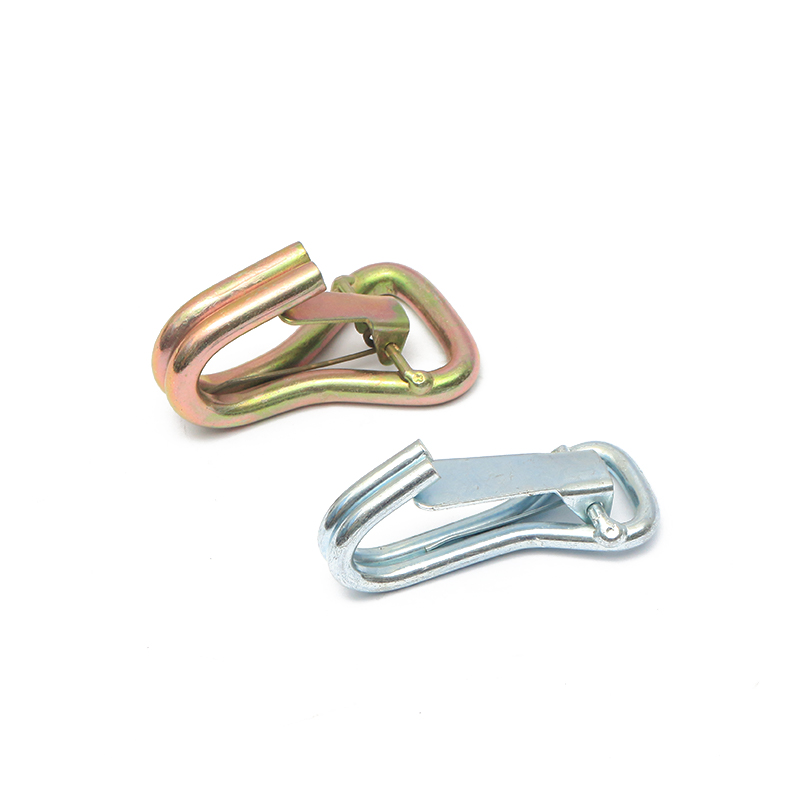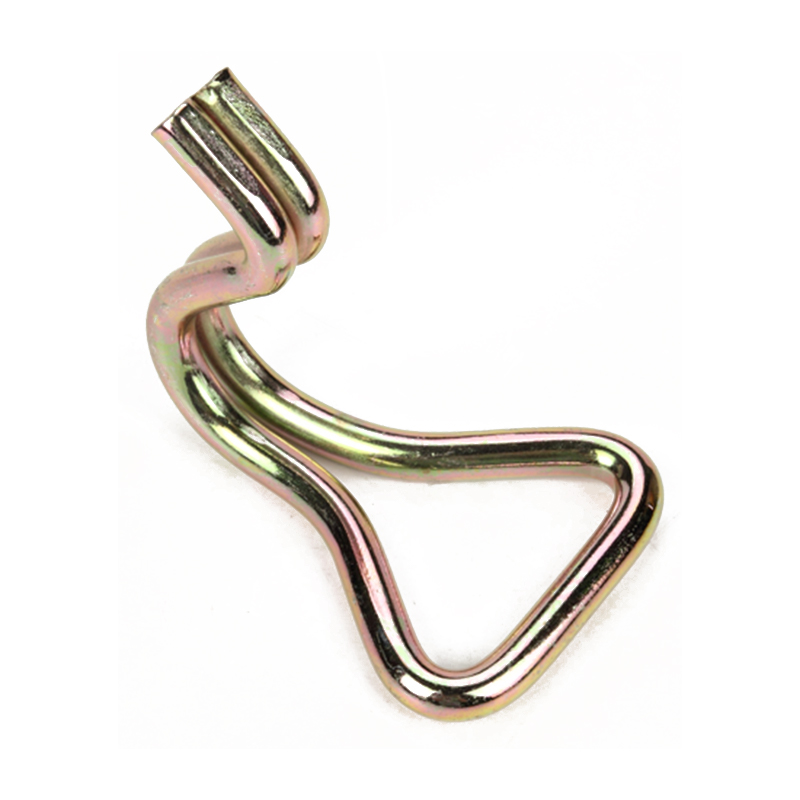No.2 new District Minglun Village,Wuxiang Town,Yinzhou District
-

Tel: +86 18658447778
-

E-mail: [email protected]
-


Content
Although metal hooks are small hardware, they are indispensable "invisible assistants" in industrial settings. From tool management to safety protection, their high strength, corrosion resistance, and easy installation significantly improve workshop efficiency and order.
Purpose: Neatly hang wrenches, pliers, power drills, and other tools to implement 5S management (sort, organize, sweep, clean, and maintain quality).
Recommended Hooks:
Heavy-Duty J-Hook (load capacity 50kg+, suitable for hanging power tools)
Magnetic Hook (capable of attaching small metal parts to prevent them from falling)
Purpose: Attaches assembly line hooks and chains to facilitate material transfer.
Example: Stainless steel swivel hooks used in automotive assembly workshops provide flexible adjustment of lifting fixture angles.
Purpose: Secures fire extinguishers and fire axes for quick access within 30 seconds. Standard: Red, rust-proof hooks (compliant with OSHA safety markings) must be used.
Purpose: Attach safety belts to prevent falls during overhead work.
Key Parameters: Hooks must be EN362 certified (load capacity ≥ 15kN).
Purpose: Secure gas pipes, hydraulic pipes, and cables to prevent tangling and knotting.
Industrial Solutions:
Bridge Hooks (distribute pipeline weight)
Self-locking Nylon + Metal Composite Hooks (anti-wear)
Purpose: Add side hanging space for long materials (such as steel pipes and angle iron).
Innovative Designs:
Retractable Hooks (accommodate materials of varying lengths)
Folding Hooks (fold away when not in use to save space)
Purpose: Suspend ground wires to dissipate static electricity from equipment (electronics factories, chemical plants).
Material Requirements: Copper hooks (excellent conductivity).
Purpose: Hanging heat-resistant gloves and masks in metallurgical workshops.
Heat-Resistant Solution:
310S stainless steel hook (800°C resistant)
Surface ceramic coating (anti-oxidation)

Applicable Environments: Dusty, oily, and humid environments (such as workshops, kitchens, and bathrooms).
Cleaning Steps:
Remove the hook (if removable).
Use a soft cloth or brush to remove dust and debris from the surface.
Stubborn Stains:
Grease Stains → Wipe with a neutral detergent and warm water.
Rust Stains → Apply white vinegar or baking soda paste (let it sit for 10 minutes before scrubbing).
Dry thoroughly to avoid any residual moisture.
Rust Prevention Methods for Different Materials:
|
Materials |
Rust Prevention Methods |
Applicable Environments |
|
Stainless Steel |
Wipe regularly with stainless steel care product |
Humid, high-salt environments (such as coastal areas) |
|
Iron/Galvanized Steel |
Spray with rust-proof oil |
General Industrial Environments |
|
Brass |
Apply metal polish to prevent oxidation |
Decorative hooks (need to maintain gloss) |
Inspection frequency:
Home use: Every 3-6 months
Industrial/commercial use: Monthly (more frequently for high-load environments)
Inspection steps:
Shake test: Gently pull the hook to check for looseness.
Inspect the screws/expansion bolts for rust and stripped threads.
Load test: Load a slightly higher weight than the standard (e.g., a nominal 5kg load, try hanging 6kg) to observe for deformation.
Problem: Hook wobbles, screw stripping, widening of the wall hole.
Solution:
Loose screws → Replace with longer/thicker screws or use threadlocker.
Wide wall hole → Insert wooden wedges or expansion plugs and reinstall.
Minor deformation → Correct with pliers (iron/steel hooks only).
Note: If the hook is severely rusted, cracked, or noticeably bent, it must be replaced immediately!
Maintenance Focus: Rust and Mold Prevention
Choose 304/316 stainless steel hooks (for greater corrosion resistance).
Clean monthly with alcohol or anti-mold spray.
Maintenance Focus: Heat and Oil Resistance
Avoid prolonged exposure of hooks to dirt and contaminants.
Avoid prolonged exposure of hooks to open flames or high-temperature steam.
If oil and contaminants accumulate, clean with a degreaser.
Maintenance Focus: Load-bearing Inspection and Fatigue Prevention
Inspect hook welds and joints for cracks quarterly.
Avoid prolonged overload (e.g., a nominal load of 10 kg but constantly holding 15 kg).
When do they need replacement?
Severe Rust: Surface rust penetrates the interior, compromising structural strength.
Deformation/Cracking: Hooks are bent more than 10% or have visible cracks. Screw stripping: Unable to tighten, repeatedly loosens.
Coating peeling (galvanized/powder-coated hooks): Loss of rust protection.
Replacement steps:
Remove the old hook and clean the mounting surface.
Choose a new hook made of the same or higher grade material.
Secure with rust-resistant screws or expansion bolts.